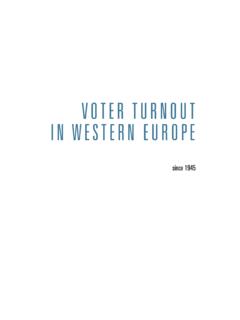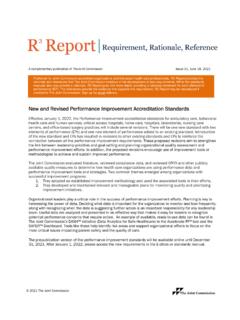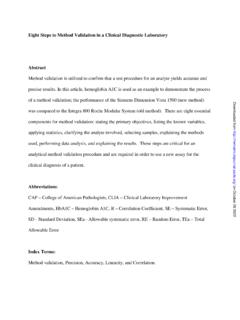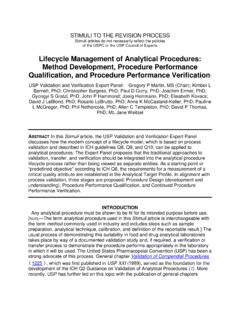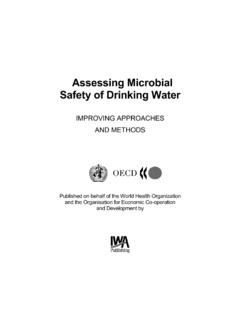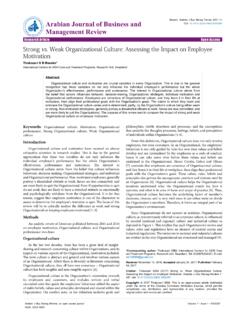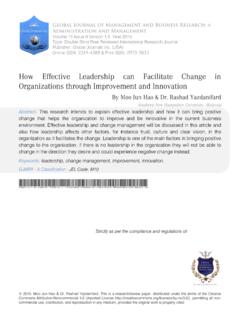Transcription of Assessing the Quality of Democracy - IDEA
1 Assessing the Quality of Democracy A Practical GuideDavid BeethamEdzia CarvalhoTodd LandmanStuart WeirAssessing the Quality of Democracy A Practical Guide International Institute for Democracy and Electoral Assistance 2008 International IDEA publications are independent of specific national or political interests. Views expressed in this publication do not necessarily represent the views of International IDEA, its Board or its Council Members. Applications for permission to reproduce or translate all or any part of this publication should be made to:International IDEASE -103 34 StockholmSwedenGraphic design by: Sant ngelo Dise oPrinted by: Bulls GraphicsCover illustration Alberto Ruggieri/Illustration Works/Corbis/Scanpix ISBN: 978-91-85724-43-75 Foreword: the state of democracyDemocracy is the predominant form of government in the world to-day.
2 For the greater part of the world Democracy has been a rare or re-cent phenomenon, but successive waves of Democracy throughout the 20th century meant that by the new millennium more countries were governed through democratic than through non-democratic forms of rule. Various attempts to enumerate democracies in the world agree that more than 60 per cent of all countries today have in place at least some form of minimal democratic institutions and procedures. The Community of Democracies lists more than 100 countries while the United Nations International Conference on New or Restored Democracies (ICNRD) has grown in depth, breadth and importance since it was inaugurated in 1988 as a forum for global democratic de-velopment.
3 Increasingly, governmental, intergovernmental and non-governmental organizations emphasize that Democracy is an end in itself, as well as an important means to other ends, such as economic development, poverty reduction and greater protection of interna-tionally recognized human rights. There have been many explanations for the remarkable growth, spread and pace of democratization. Internal explanations focus on major socio-economic transformations; mobilization by social movements and civil society organizations; class alliances, challenges and revolu-tions ( coloured or otherwise); and elite agreements and concessions.
4 External explanations focus on the defeat of an incumbent regime in war; the role of contagion from democratization processes in neigh-bouring states; the diffusion of democratic values through processes of globalization and various forms of international intervention, in-cluding support for civil society groups and nascent political party or-ganizations, state building, institutionalization, and the specification of criteria for appropriate and acceptable forms of democratic rule; and armed intervention to depose existing regimes and construct de-mocracy by force. 6A crucial element in mapping, explaining and encouraging this growth in Democracy has been the need for valid, meaningful and re-liable ways to measure and assess democratic progress and the Quality of Democracy itself.
5 Scholars and practitioners have adopted a number of strategies to measure Democracy , including categorical measures, scale measures, objective measures and hybrid measures of democrat-ic practices, as well as perceptions of Democracy based on mass public opinion surveys. In certain instances, measures have been developed for particular needs and then used for other purposes, while in other instances general measures of Democracy have been developed for a wide range of applications by the academic and policy community. The quest for comparability and broad geographical and historical coverage, however, has meant a certain sacrifice of these measures ability to capture the context-specific features of Democracy , while the turn to good governance, accountability and aid conditionality among leading international donors has created additional demand for measures of Democracy that can be used for country, sector and programme-level assessments.
6 In response to these many developments and the proliferation of de-mocracy measures, International Institute for Democracy and Elec-toral Assistance (International IDEA) has developed an alternative framework for Democracy assessment that moves away from country ranking and external judgement to comprehensive assessment based on national assessment teams led by governments or civil society and academic institutions. The framework combines a commitment to the fundamental principles of Democracy , the mediating values that are related to these principles, and a range of questions about demo-cratic performance .
7 There is scope in the framework for using existing measures while at the same time incorporating much more context-specific information on the Quality of Democracy that can then be linked to domestic processes of democratic reform. Its use across new and old democracies as diverse as Mongolia and Italy, Bangladesh and Kenya, Peru and Australia has shown that it works, and demand continues for the framework to be applied in new and challenging contexts around the world. After the successful application of its Democracy assessment framework in over 20 countries, International IDEA, along with the UK-based Democratic Audit, the Human Rights Centre at the University of Es-sex in the United Kingdom, and the larger State of Democracy net-work, has drawn on the lessons, built further on the strengths of the framework, and incorporated these into the thoroughly revised frame-work contained here.
8 Assessing the Quality of Democracy : A Practical 7 Guide includes all the normative principles and practical elements of the framework, experiences from those countries that have used the framework, and the ways in which Democracy assessment can be linked to the process of democratic reform. The assessment framework outlined here upholds International IDEA s fundamental principles in supporting Democracy worldwide: Democratization is a process that requires time and patience. Democracy is not achieved through elections alone. Democratic practices can be compared but not prescribed.
9 Democracy is built from within societies. Democracy cannot be imported, or exported, but supported (International IDEA 2005: 12). This Guide provides a robust package of materials that are ground-ed in many years of experience and practical application in old and new democracies across the world. This volume is complemented by another, entitled Assessing the Quality of Democracy : An Overview, which provides an introduction to the framework, including its fun-damental democratic principles, its mediating values, the assessment search questions, examples of its application around the world, the typical steps in carrying out an assessment, and its value as a tool for promoting democratic reform.
10 Both volumes should prove highly attractive to grass roots Democracy activists, civil society organiza-tions, reform-minded actors in political society and in government, and those international donor agencies and intergovernmental and non-governmental organizations that are committed to building de-mocracy for the future. 8 PrefaceDemocracy has spread and taken root in many parts of the world in the past three decades. While the performance and Quality of these democracies differ, more people than ever before are governed by elected representatives. The democratic form of government has thus achieved global dominance.



